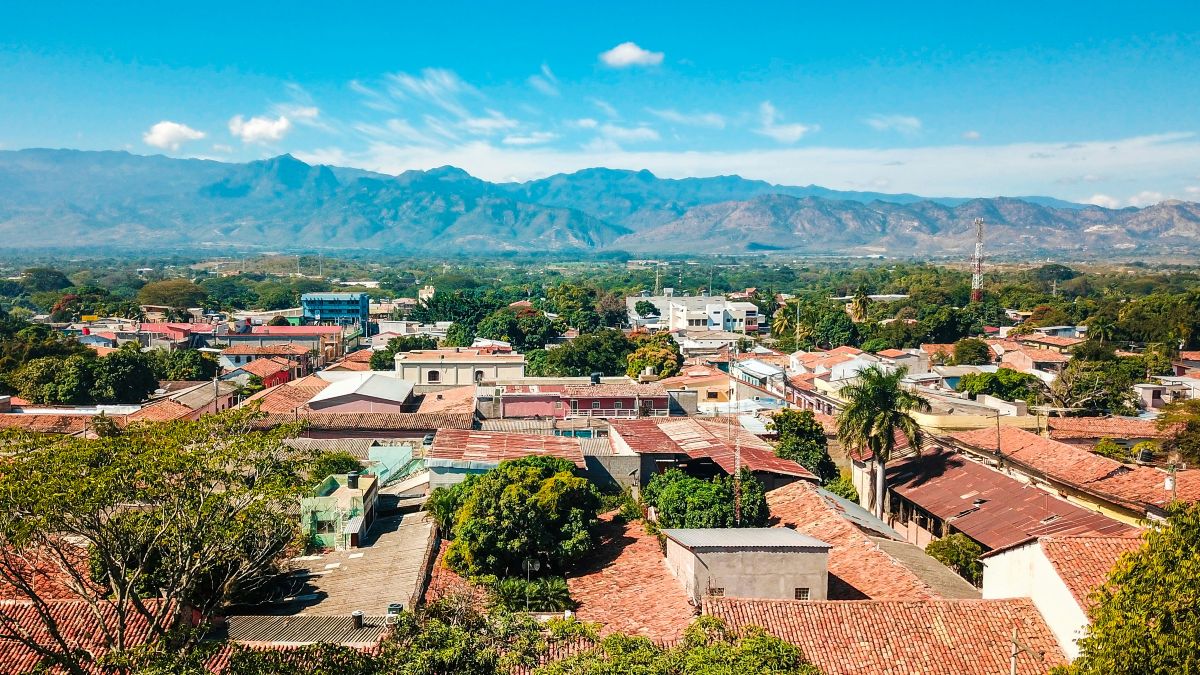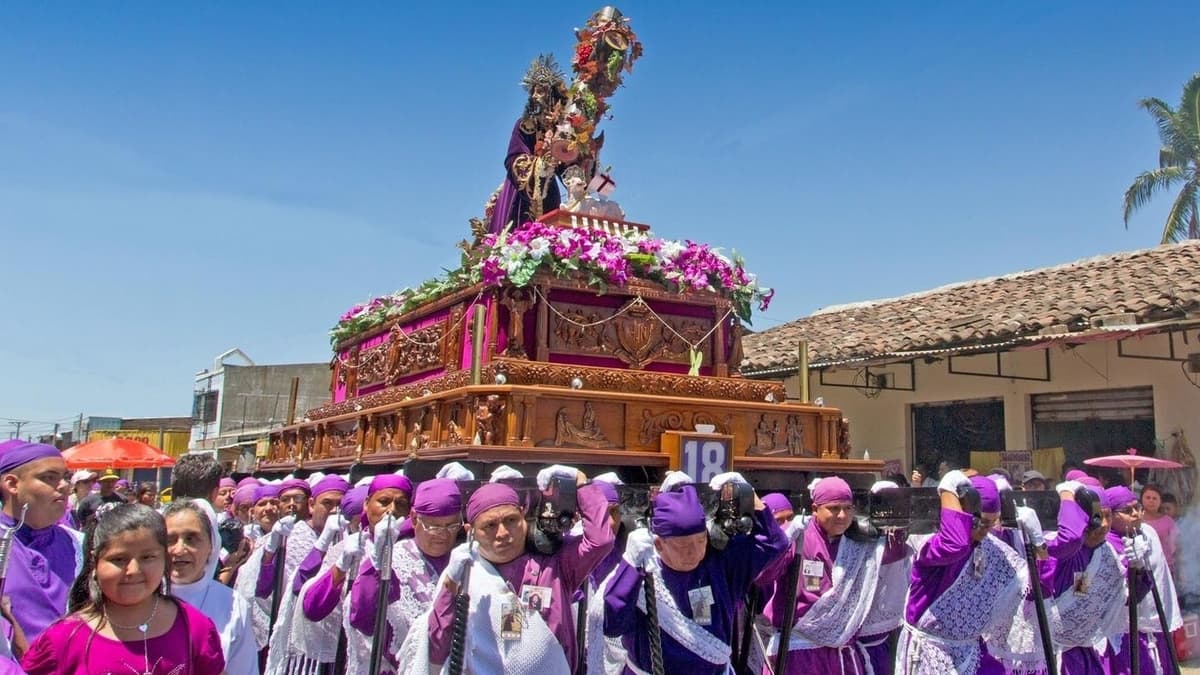All about Easter in Costa Rica: A look at traditional Semana Santa myths, seafood feasts, and why it’s the best time of year to explore San José.
Easter in Costa Rica doesn’t have the gravity you experience elsewhere in the region. You won’t find the sawdust-carpeted streets, the processions, and the deep spiritual solemnity you find elsewhere, particularly in places with more traditional colonial towns and indigenous communities. Costa Rica, at least nowadays, just isn’t like that. It may have been once upon a time, but not so much now. If you’re looking to experience the parades, the alfombras, and all the religious ceremony, then Easter in El Salvador or Guatemala are probably better bets than Costa Rica. Maybe even Belize, too. That’s not being disparaging at all, it’s just saying it how it is for people specifically looking for that sort of thing.
Sure, Costa Rica does have its Easter processions. It’s still a Catholic country and there’s still plenty of faith (evident from the palm crosses on front doors you’ll see around). They’re just smaller and more low-key than ones in, say, Antigua, Guatemala or Granada, Nicaragua. You’ll find Palm Sunday and Good Friday processions throughout the country and are worth checking out if you’re in-country, especially in Cartago or
So with all that said, and really not trying to put a negative spin on things, how does Costa Rica celebrate Easter? Let’s take a look at what happens during Semana Santa in Costa Rica.
Happy Easter from Costa Rica! 🇨🇷 pic.twitter.com/bS0sr2qL2y
— Rhina Guidos (@rhina_guidos) April 9, 2023
Holy Week in Costa Rica
Semana Santa in Costa Rica mixes faith with a hefty dose of folklore and superstition. Nowadays, many Costa Ricans take the entire week off and head to the beach, which is a nod to the concept of not working over this period. Back in the day, Holy Wednesday through Good Friday used to mean a full stop from everything: Women pre-cooked meals, men stacked wood, and families hunkered down for prayer and meditation. Some still hold to that, hitting mass or watching Easter specials like Jesus of Nazareth on TV (Costa Rican TV is all about old dubbed religious movies and TV shows during this week).
Good Friday’s thick with myths. Swim in the ocean or a river, and you might turn into a fish, or so the story goes. Climb a tree, and you could sprout a tail. It’s all about respecting the day’s weight; loud noises or chatter might call down spirits like La Llorona. Work’s taboo too: hammer a nail or sew, and you’re tempting bad luck. In rural spots, they say cows and oxen kneel at midnight to pray, though no one’s got proof.
Fortune hunters eye the higuerón tree legend. At midnight on Good Friday, it supposedly blooms under a cloud where the devil waits. Grab the flower without getting nabbed, and you’ll win the lottery. Single men dodge carrying the Saint John icon during the holy burial, fearing they’ll stay unwed.
Easter Sunday itself is a family day. After church, people eat together, if they haven’t been at the beach all week, which they might well have been. In Guanacaste, rural towns burn a Judas effigy at midnight, then pranksters swipe stuff – oxcarts, shoes, tools – dumping it on the soccer field. Churches might charge to get it back, cash going to the poor or repairs.
Traditional Easter Foods in Costa Rica
Semana Santa in Costa Rica brings out a tasty spread for foodies. Fried fish, usually tilapia or whatever’s fresh, lands on plates with rice and beans, a combo that’s hard to beat. For something with a kick, many on the Caribbean side mix rice with calamari or shrimp and spice it up. Ceviche keeps it light and tangy for those at the beach, while bacalao guisado, a stewed cod with vegetables, warms things up on cooler nights inland. Picadillo de palmito, a hearts-of-palm hash with spices, rounds out the meat-free options before the carnivores get their time on Sunday. Easter Sunday often features tamales with pork or chicken or gallo pinto with plantains for a hearty finish. Beachgoers often grill out and barbecue on Easter Sunday, too. There’s nothing better than coming in from the ocean and smelling that cooking meat to enjoy with an ice-cold beer!
Costa Ricans have a sweet tooth, and Easter has its traditional desserts. Empanadas de chiverre come stuffed with squash jam, a treat you’ll find everywhere, alongside miel de chiverre spread on bread. Miel de coco, blending coconut and condensed milk, also adds a rich twist. Rosquillas, crunchy corn-and-cheese crackers, pair with coffee, and Maíz de la Semana Santa, a sweet corn, sneaks into side dishes.
If you’ve ever hung out on a Costa Rican beach, chances are you’ve eaten ceviche. We have the perfect ceviche recipe for those hot days at the beach. Here’s how to make ceviche Tico-style.https://t.co/XDJ1BoO38D#CentralAmericanTwitter #CostaRica pic.twitter.com/K5MwPQD9GD
— Central America Living (@VidaAmerica) July 2, 2018
Traveling to Costa Rica for Easter
If you’re coming to Costa Rica for Easter, the main thing to do is book way in advance. This is by far the busiest week of the year, outstripping even that other peak week between Christmas and New Year. Many businesses close, banks and public offices close, and most everyone goes to the beach. That means hotels are full in most Costa Rica beach communities.
What this does mean, though, is that Semana Santa is an excellent time to be in San José. Most people have left and the city is wide open. Traffic, normally murderous, drops to near-nothing. Museums are a breeze and parks are quiet and tranquil. Sure, there’s not much in terms of the usual nightlife because less people are around, but Easter week in San José is a breath of fresh air compared to the norm, especially from Thursday onwards.
Meanwhile, as we say, beach towns really do pack out, and even the quieter ones, unlike traditional party centers like Jacó, Playas del Coco, or Tamarindo can get a little crazy. Inland, mountain spots like Monteverde fill up and draw crowds taking advantage of the week off to hike and enjoy nature. Booking early, wherever you go, is key.
Easter in Costa Rica is a lot of fun if you book early and don’t mind crowds at the beach. It’s hot, sunny, and dry, and the city is chilled. And while you won’t keep the massive Easter processions and colonial or indigenous vibe you find elsewhere in the region, the people are friendly, the food is good, and the vibe is pura vida. Enjoy!




